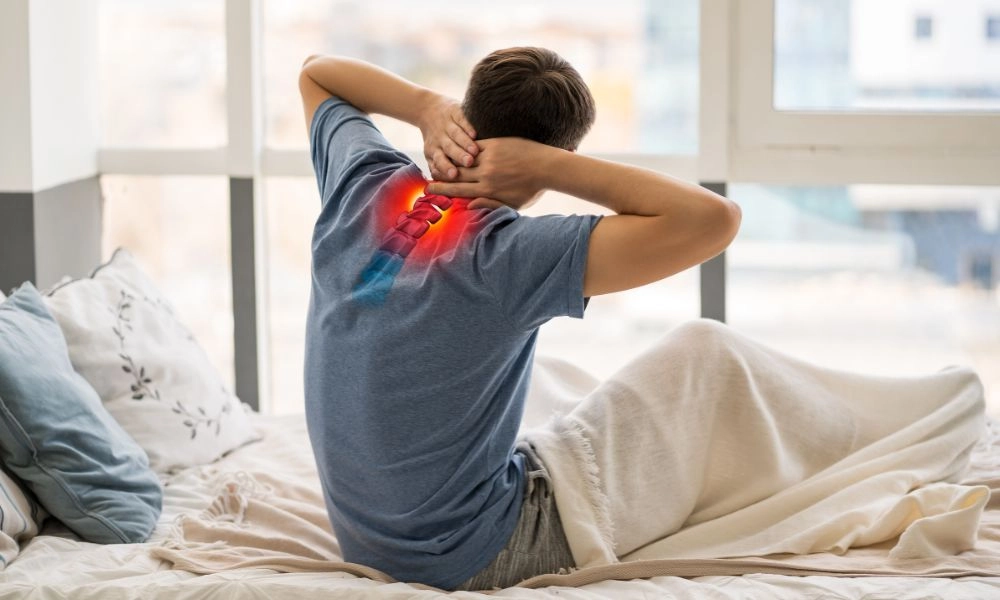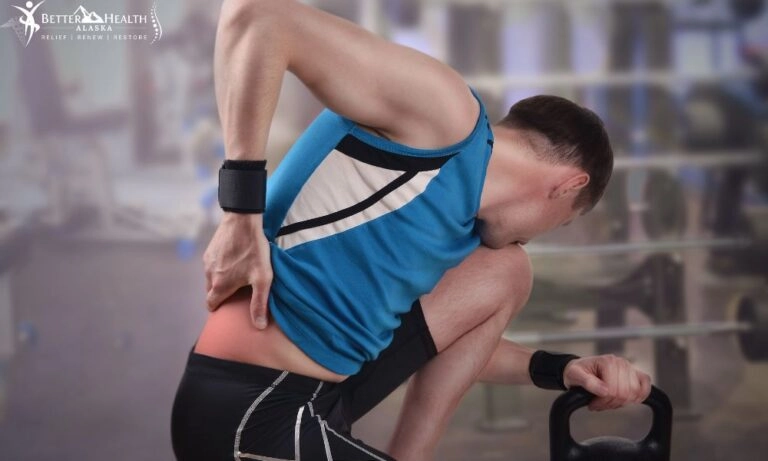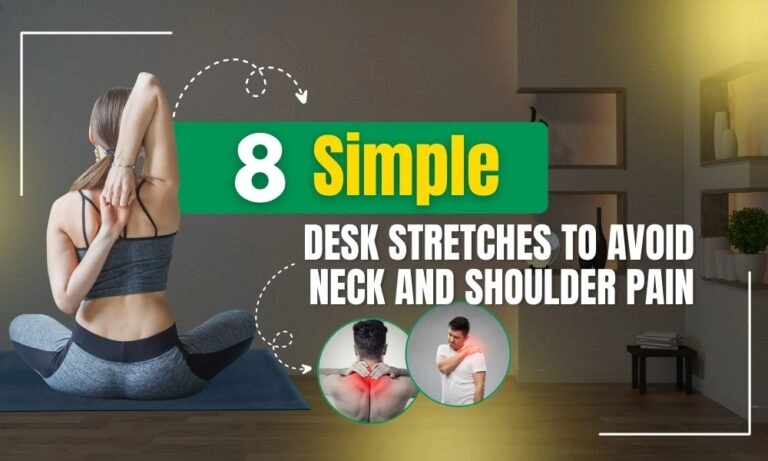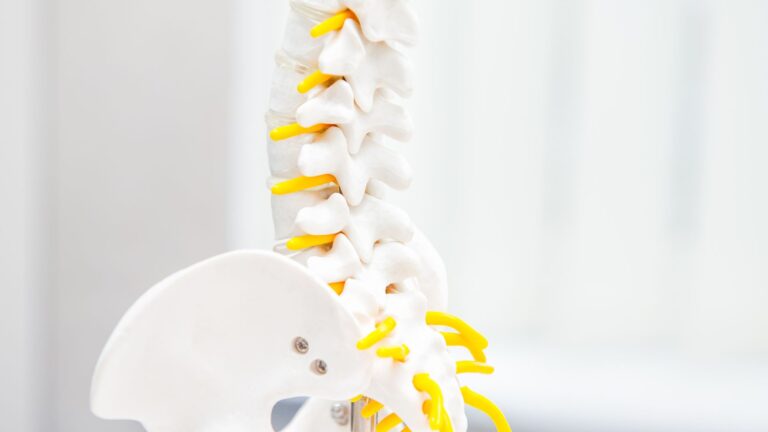Degenerative Disc Disease (DDD) in the neck is also called Cervical Disc Disease (CDD). As we age, degeneration of the spine is a common occurrence. The discs that cushion our vertebrae are made largely of water. Over time, they tend to dry up and desiccate. This can lead to pain, aches, or other issues involving the neck – all of which are common complaints of the elderly.
If issues become such a problem that they interfere with one’s daily living, it is advised to seek out medical care from a local Anchorage healthcare office. In particular, chiropractic in Anchorage, Ak and physical therapy are well-suited for musculoskeletal conditions such as DDD, which often involve the neck.
Symptoms
Symptoms of Cervical Degenerative Disc Disease range in both intensity and severity. Sometimes no symptoms are felt, and other times, the patient suffers significant disabilities. The symptoms caused by CDD, in many cases, may develop gradually, while in others it can strike suddenly and without warning.
1) Mild neck issues (soreness, stiff neck, etc…): This is the most common symptom associated with CDD. It can range in severity from a simple stiff neck that is merely a nuisance to the more aggravating cases where pain flares up suddenly and lasts for as long as several days. When caused by a bulging disc at the C5-C6, it is most often felt in the back of the neck.
2) Neck tension and discomfort: Another one of the more mild symptoms is the development of muscle tension or simply knots of discomfort in the neck.
3) Headaches are another symptom that occasionally occurs. Although sometimes they may simply be a nuisance, if they are particularly severe, you may have to seek out some medical help.
4) Nerve Pain: This type of pain manifests as a kind of electric-shock-like feeling. It can often result in radicular pain – that is, pain radiating to other parts of the body. In cases of DDD at the C5-C6 and the C6-C7 discs, the parts of the body most commonly affected by radicular pain are the fingers, the hands, and the arms. Most of the time, though, the pain will only manifest on one side of the body or the other – usually not both.
5) Other radicular symptoms: Besides radiating pain, sometimes CDD can project paresthesia – that is, feelings of numbness, weakness, or a “pins and needles” type of feeling to other parts of the body. Again, the most common locations are the hands, arms, and fingers. These are the types of symptoms that can cause difficulty with living a normal life (i.e. you can’t tie your shoes or get dressed, etc…).
6) Pain that worsens with movement: another symptom of CDD is increased pain with movement. This is actually a common characteristic of DDD in general. Regardless, whether it is CDD in particular, or DDD more generally, simply taking time to rest may reduce or eliminate much of the pain. Learn the things you need to avoid with DDD.
7) Myelopathy – In severe cases, if the CDD leads to sufficient narrowing of the spinal canal, the spinal cord, itself, may be injured by compression. This injury is referred to as myelopathy. It, in turn, can lead to other severe symptoms like:
- A decrease in dexterity resulting in poor coordination/balance
- A problem or an inability to move not only the upper extremities but the lower ones as well (i.e. feet, legs, hands, arms, etc…)
- Radiculopathy causing numbness/weakness at other locations throughout the body
- Painful electric-shock-like feelings that affect both upper and lower extremities and that worsen whenever the individual bends over.
- Lost control of bowel or bladder or both.
Should myelopathy develop or be suspected to have developed, the individual is advised to get immediate medical attention. The condition is most common in individuals over 50 years of age.
8) Mobility Issues: In addition to the pain caused, or perhaps because of it, patients suffering from CDD often suffer from reduced mobility in both the neck and sometimes even the shoulder. Generally, the range of motion will be lower because movement is either restricted or just very, very painful.
9) Interior issues like a herniated disc (in which the annulus fibrosus tears), a bulging disc (where the annulus fibrosus bulges out of place), the growth of osteophytes and bone spurs, disc collapse, and other issues. As these are interior issues, they require the expertise of a medical professional with specialized equipment to find, analyze, and diagnose. On their own, a patient wouldn’t be able to recognize such things.
Chiropractic Red Flags for Anchorage Patients
Although self-treatment may suffice in early stages of the disease, it is still more advisable to seek medical care sooner, rather than later. CDD cannot be reversed. Signs of an immediate need for medical attention include:
- Unrelenting, persistent pain that lasts more than one week despite a diligent effort to treat oneself.
- The repetitive occurrence of severe headaches in addition to normal levels of neck pain.
- Radicular pain and related symptoms (numbness or tingling) down the arm that can also affect the hands and fingers.
- Muscle weakness in the hands, arms, or elsewhere in addition to pain.
- The development of urinary or bowel issues – like loss of bladder control, etc…
- Pain or other associated symptoms that interfere with one’s normal life activities like sleeping or moving about your home
To be safe, you should seek out medical assistance hopefully before any of these issues become a problem. But if you have not and one of the above occurs – treat it as a red flag and contact a medical professional immediately.
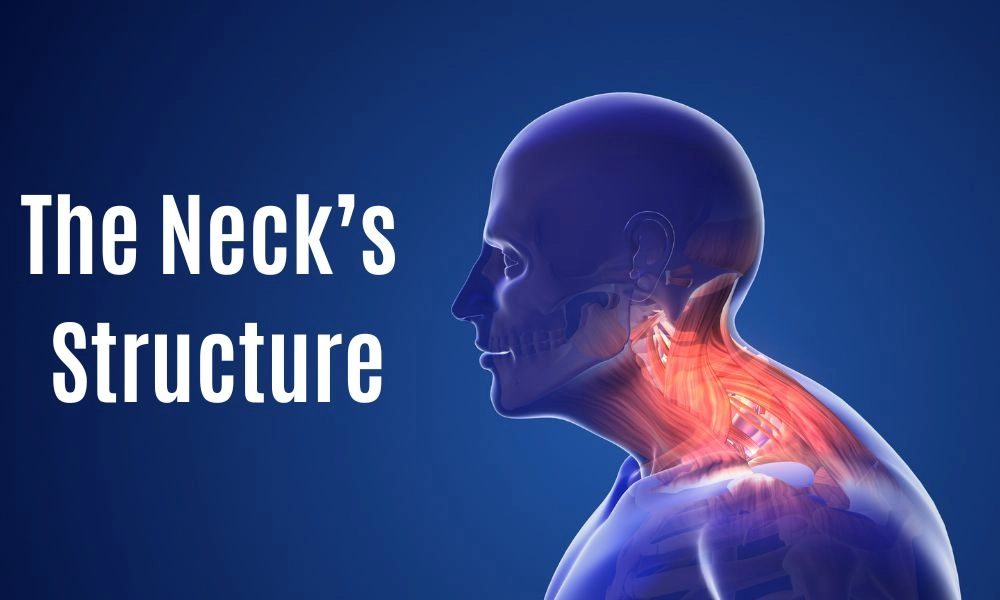
The Neck’s Structure: In Brief
There are seven cervical vertebrae in the neck, ranging from C1 through C7. Vertebra C1 is attached to the base of the skull and the next lower vertebra: C2. Vertebra C7 is attached to vertebra C6 and the first vertebra in the thoracic spine: vertebra T1.
Each vertebra consists of a bone with a very specific shape that allows the spinal cord to pass through a hole in one end. As the vertebrae are stacked one upon the other, the holes in each vertebrae align, constructing the spinal canal – which is basically a tunnel through bone through which the spinal cord can pass and be protected from easy injury.
The vertebrae are held together by ligaments and muscles, and they have small holes called foramen through which nerves (attached to the spinal cord) can pass.
Additionally, between every two vertebrae there is a disc that acts as a shock-absorber to both protect the spine from impacts and allow it to bend and twist to a certain limited extent. Every disc consists of an outer ring of tough material (basically strands of cartilage) called the annulus fibrosus and an inner glob of gel-like fluid called the nucleus pulposus.
The cervical vertebrae most commonly affected with DDD are the vertebrae C5-C6, and C6-C7. This discussion will focus mostly on them. So, let’s get to it!
Diagnosis
Properly diagnosing CDD requires a professional medical expert (Physician, Chiropractor, etc…). It usually consists of a three part process. First, the medical professional will review your medical history (have you had similar issues in the past, etc…). Next, they will perform a physical examination. This may require some hands on palpation and such to explore the extent of symptoms.
The third and final tool in the arsenal is imaging. This usually requires the use of either X-Rays, MRI’s, or other types of imaging technology to make the final determination. In situations where the patient suffers DDD on multiple discs other techniques may be used to fine-tune the diagnosis. Such techniques may employ nerve blocks like epidurals.
Causes
Cervical Disc Degeneration can have a variety of causes. The most significant ones are those that affect the discs, spinal alignment, the spinal cord itself, or any associated nerves and nerve endings. Some common causes leading to such things can include:
- Trauma from a car accident.
- Injury caused by falling down
- Simple wear and tear over time
- The desiccation of discs from age
- Regular and prolonged repetitive movements
- The development of other degenerative conditions such as: bone spurs, osteoarthritis, or even collapse of the disc itself.
Of particular interest and concern are certain daily activities that can sometimes aggravate a person’s CDD. Common problem activities include holding a phone between ear and shoulder, or certain poor sleeping habits.
Chiropractic Treatment Options for Anchorage Patients
The very first step of many treatment plans may entail just a day or two of rest – possibly in conjunction with heat/ice packs. This may be enough to relax the muscles around the neck and resolve the pain. However, rest will not solve a serious problem and is not advised for more than a day or two.
Typically, the next treatment for CDD entails specially determined stretches that build the strength of the muscles in and around the neck. This is done in order to help the cervical neck keep its posture. Loss of such posture is one of the things that can lead to CDD or, at the very least, aggravate the condition if it has already developed.
If stretches don’t do the trick, another option is medication. This usually consists of over-the-counter NSAIDS and such. These medications serve to reduce inflammation in order to relax muscles and increase blood flow to the strained area.
Another option is a chiropractic adjustment by a qualified chiropractor. Should the alignment of the cervical spine be out of position, a chiropractor can gradually realign it. A chiropractor can also recommend certain lifestyle changes (diet, etc…) that may help or, if necessary, refer the patient to a physician for surgery.
How Serious is Degenerative Disc Disease of the Neck
Like many musculoskeletal conditions, the seriousness of DDD in the neck depends on the stage of degeneration it is in. In the beginning, you might just have simply a stiff neck which may not seem like a big deal. However, it is best to play it safe and seek out treatment with the onset of the very first symptoms. DDD cannot be reversed, so long-term it is a serious condition. In fact, if left untreated it can lead to severe disability.
Living With Degenerative Disc Disease in the Neck
Because DDD cannot be cured or reversed with current medical science, you have to change your focus from curing the disease to “managing” the disease.
First, that means catching it as soon as possible (contact a medical professional the moment you notice symptoms). From there, the next step to take is slowing its progression. You can do this with the assistance of a local physical therapist or a chiropractor in Anchorage. The physical therapist will help build up the needed musculature to keep the cervical spine in alignment (this goes a long way in keeping further injury from occurring). And a chiropractor can adjust the bones should they get out of alignment.
A chiropractor can also make other recommendations like certain lifestyle changes (diet, exercise, etc…) or suggest heat/cold therapy to manage inflammation and pain. The goal here is to stave off the need for surgery for as long as possible.
The Science of CDD
The value and importance of chiropractic care in dealing with CDD to alleviate both C5-C6 and C6-C7 symptoms is clear when you take a look at the scientific literature. Although, in some instances, the chiropractor merely serves to diagnose the condition and then refer the patient on, their input and skills are clearly demonstrable.
For example, a study published in Cureus details how a chiropractor evaluated the symptoms of a patient suffering from DCM (degenerative cervical myelopathy) – a case of very severe CDD – and correctly identified the disease. The chiropractor referred the patient to a surgeon to get the needed treatment. The study mentions how the reviewed literature detailed 11 similar cases where chiropractors identified the disease and referred the patient to a surgeon.
Of course, chiropractors can also treat issues that aren’t quite so severe.
Another study in the Journal of Family Medicine and Primary Care details how a chiropractor relieved the symptoms of a 61-year-old female with severe neck pain stemming from a 30-year-old anterior cervical discectomy and fusion (surgery on and fusion of joints). The chiropractor was able to resolve the symptoms through a series of 34 sessions.
In another study in the Journal of Family Medicine and Primary Care, a 57-year-old woman presented with chronic neck pain and numbness in the left arm. Her symptoms had persisted for six months, and she had resisted attempts to treat with cervical traction, rehabilitative exercise, acupuncture, and pain medicine. Fortunately, three months of treatment with regular chiropractic adjustments and intermittent cervical traction led to complete relief.
Clearly, chiropractic care remains a logical first choice for individuals dealing with DDD of the neck or other musculoskeletal issues causing problems.
Conclusion
In the end, if you are suffering from neck pain or any other symptoms that may hint at a more pernicious condition like cervical disc degeneration at the C5-C6 or C6-C7 levels, chiropractic care remains an excellent option to pursue. Here at Better Health Alaska in Anchorage, our team of skilled chiropractors, physical therapists, and nurse practitioners is ready to help. So, don’t wait. Reach out and contact us now. Your neck will thank you.



